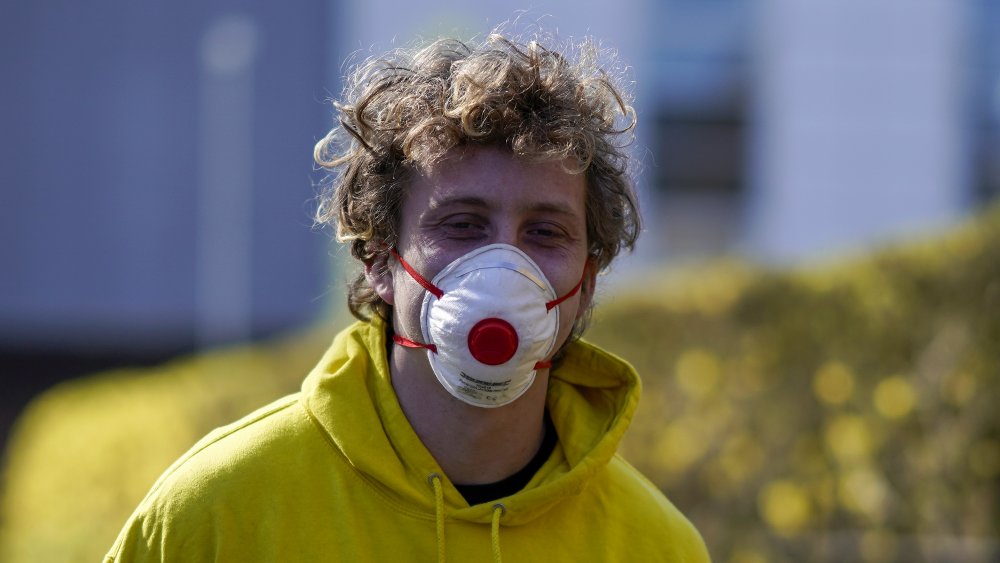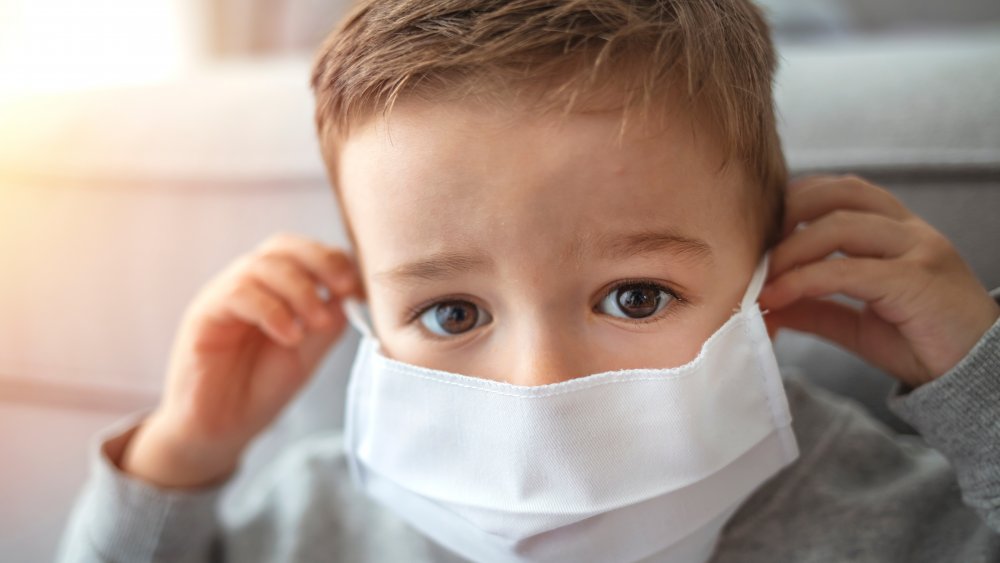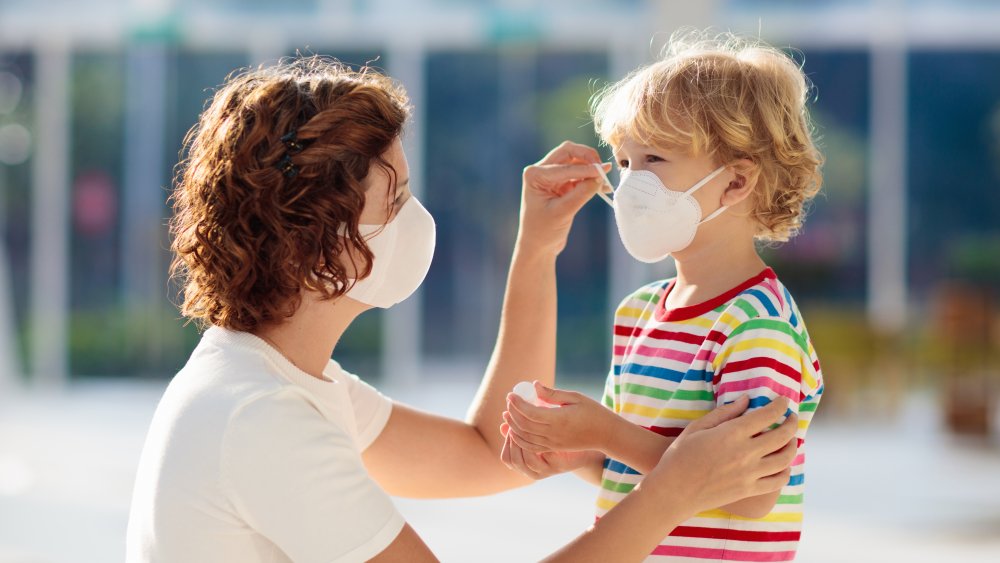The Biggest Face Mask Error You're Probably Making
Aren't masks fun? The Lone Ranger, and Zorro, and Guy Fawkes, and Carnival in Rio — for some folks Halloween isn't just for October anymore. But really, it's fun, right? That's kind of what people thought about self-quarantining — a good excuse for some alone time, catch up on a couple of projects, finish reading or writing that novel ... the bloom is most assuredly off that particular rose by now. Efforts to contain the coronavirus, to flatten the curve, to prevent people from becoming sick (and, in some cases, prevent death) include asking everyone to stay home, self-isolate, to avoid contact with other people, especially strangers — because really, how do you know where their hands have been?
All well and good, except for those souls who don't have that particular option and must go out in public — those performing essential work, fetching sustenance, or any number of other well and truly good reasons to leave the safety of home. The Centers for Disease Control and Prevention (CDC) has been recommending the use of face masks for some time now (though the CDC refers to "cloth face coverings," which is kind of an overly clinical, Mardi-Gras-buzz-kill kind of phrasing) for those who must go out in public, for whom appropriate social distancing isn't necessarily practical. The CDC also offers tips on how to make your own cloth face covering at home (let's face it: these days, craft projects are good).
Be like this guy: remove your mask by the loops, not the cloth
But even with a mask — er, cloth face covering; CFC — there's still danger afoot, or ahand, if you prefer. One way to negate the benefit of wearing a face covering is by then touching the mask/CFC with unwashed hands. Hand washing is still one of the top techniques in our arsenal of self-care, and is crucial, especially after public contact of any kind. As explained by Dr. Jay Woody, chief medical officer of Intuitive Health, at Best Life Online, "Your first line of defense against spreading the virus is to wash your hands," especially before and after touching your mask/CFC. "There is a lot of room for cross-contamination and even self-contamination," he said. Ergo, don't touch the mask/CFC by the cloth area; remove it by the ear loops holding it in place. And afterwards? Your hands aren't the only things that need washing. Cleanse the mask with good hot water after each wearing. Between uses, storing it in a paper bag will help keep bacterial growth to a minimum. If you want to say "Hi-Yo, Silver!" every time you put it on, that's up to you.
It can't hurt to mask
While hand-to-mask action is the number one mask-related faux pas, there are plenty of other ways in which you can bungle the entire operation. Thankfully, most of them are easily solved with a bit of common sense. HuffPost reminds us that if the mask isn't covering your nose, you're doing it wrong.
"We often breathe partially or completely through our nose, and you can [become infected] by breathing viral particles," says Thomas Russo, chief of the infectious disease division at the University of Buffalo. "Likewise, if you're infected and your mask is down just covering your mouth, if you sneeze ... then you can generate respiratory droplets in that fashion." Those droplets are the number one way the disease spreads.
Wearing the mask around your neck when it's not on your face is also not a great idea — basically for the same reason we don't want to touch it after use — cross-contamination. If the mask has come into contact with any infectious particles, you are then effectively wearing a coronavirus necklace.
Masked and loose with the rules
It's also important to ensure your mask fits properly when you're wearing it, to make sure it's actually doing its job. The CDC has already issued a warning for men with beards, and presumably any bearded ladies as well, to be wary of the effect their bushy faces may have on masks. The more bulbous the bristles, the less likely the mask is going to be a tight fit.
"You are not going to get a perfect seal with a surgical mask or with a homemade mask, but you want to make sure it fits properly," said Erin Sorrell, an assistant research professor in Georgetown University's department of microbiology and immunology. "It needs to be comfortable so that you'll wear it, but secure enough that it doesn't slide down."
Generally, that means fiddling with the straps to ensure that gaps on the sides are minimized, and that it's not bouncing all over the place. Not all heroes wear masks, but in this case, doing so at least puts you on the right team.



